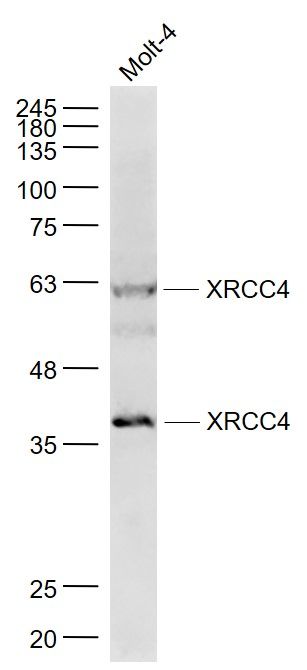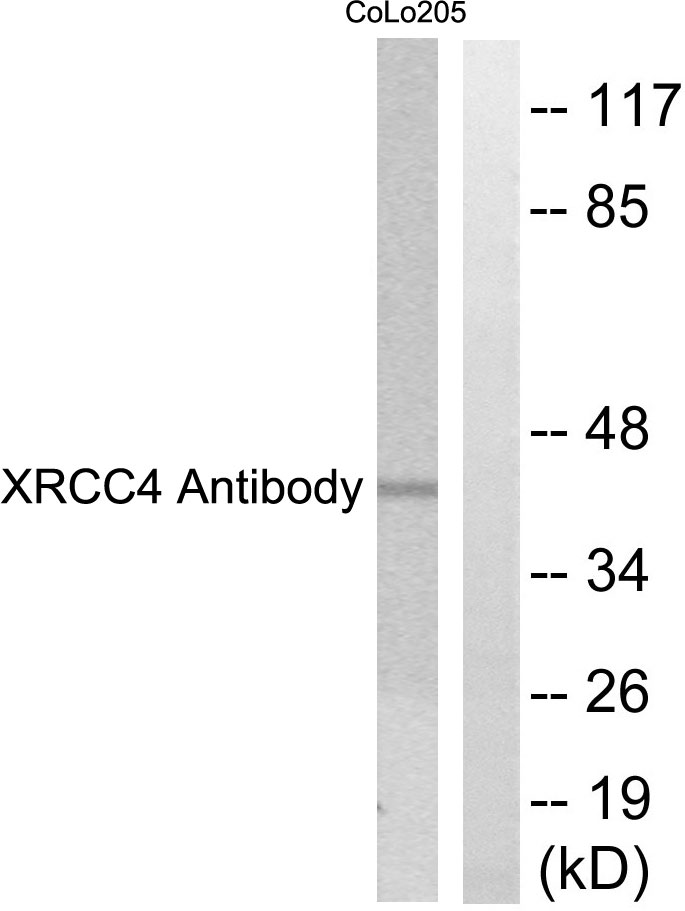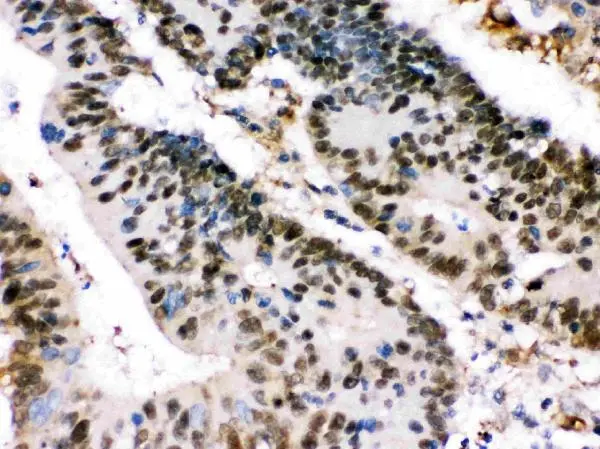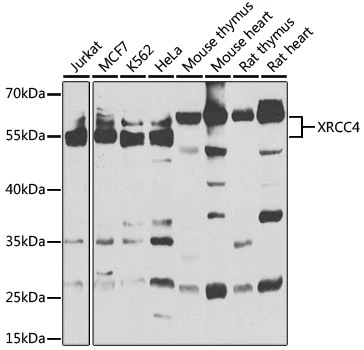XRCC4 antibody
GTX109632
ApplicationsImmunoFluorescence, Western Blot, ImmunoCytoChemistry, ImmunoHistoChemistry, ImmunoHistoChemistry Paraffin
Product group Antibodies
ReactivityHuman, Mouse
TargetXRCC4
Overview
- SupplierGeneTex
- Product NameXRCC4 antibody
- Delivery Days Customer9
- Application Supplier NoteWB: 1:500-1:3000. ICC/IF: 1:100-1:1000. IHC-P: 1:100-1:1000. *Optimal dilutions/concentrations should be determined by the researcher.Not tested in other applications.
- ApplicationsImmunoFluorescence, Western Blot, ImmunoCytoChemistry, ImmunoHistoChemistry, ImmunoHistoChemistry Paraffin
- CertificationResearch Use Only
- ClonalityPolyclonal
- Concentration0.09 mg/ml
- ConjugateUnconjugated
- Gene ID7518
- Target nameXRCC4
- Target descriptionX-ray repair cross complementing 4
- Target synonymsSSMED, hXRCC4, DNA repair protein XRCC4, X-ray repair complementing defective repair in Chinese hamster cells 4
- HostRabbit
- IsotypeIgG
- Protein IDQ13426
- Protein NameDNA repair protein XRCC4
- Scientific DescriptionThe protein encoded by this gene functions together with DNA ligase IV and the DNA-dependent protein kinase in the repair of DNA double-strand break by non-homologous end joining and the completion of V(D)J recombination events. The non-homologous end-joining pathway is required both for normal development and for suppression of tumors. This gene functionally complements XR-1 Chinese hamster ovary cell mutant, which is impaired in DNA double-strand breaks produced by ionizing radiation and restriction enzymes. Alternative transcription initiation and alternative splicing generates several transcript variants. [provided by RefSeq]
- ReactivityHuman, Mouse
- Storage Instruction-20°C or -80°C,2°C to 8°C
- UNSPSC12352203
References
- Chakraborty A, Sreenivasmurthy SG, Miller W, et al. Fructose-2,6-bisphosphate restores DNA repair activity of PNKP and ameliorates neurodegenerative symptoms in Huntington's disease. bioRxiv. 2024,:pii: 2023.10.26.564220. doi: 10.1101/2023.10.26.564220.Read this paper
- Bakr A, Hey J, Sigismondo G, et al. ID3 promotes homologous recombination via non-transcriptional and transcriptional mechanisms and its loss confers sensitivity to PARP inhibition. Nucleic Acids Res. 2021,49(20):11666-11689. doi: 10.1093/nar/gkab964Read this paper
- Chakraborty A, Tapryal N, Venkova T, et al. Classical non-homologous end-joining pathway utilizes nascent RNA for error-free double-strand break repair of transcribed genes. Nat Commun. 2016,7:13049. doi: 10.1038/ncomms13049Read this paper
- Chakraborty A, Wakamiya M, Venkova-Canova T, et al. Neil2-null Mice Accumulate Oxidized DNA Bases in the Transcriptionally Active Sequences of the Genome and Are Susceptible to Innate Inflammation. J Biol Chem. 2015,290(41):24636-48. doi: 10.1074/jbc.M115.658146Read this paper
- Truong LN, Li Y, Sun E, et al. Homologous recombination is a primary pathway to repair DNA double-strand breaks generated during DNA rereplication. J Biol Chem. 2014,289(42):28910-23. doi: 10.1074/jbc.M114.576488Read this paper
- Sousa MM, Zub KA, Aas PA, et al. An inverse switch in DNA base excision and strand break repair contributes to melphalan resistance in multiple myeloma cells. PLoS One. 2013,8(2):e55493. doi: 10.1371/journal.pone.0055493Read this paper





![IHC-P analysis of breast adenocarcinoma tissue using GTX83406 XRCC4 antibody [4H9]. Antigen retrieval : Heat-induced epitope retrieval by 10mM citrate buffer, pH6.0, 100oC for 10min. Dilution : 1:50](https://www.genetex.com/upload/website/prouct_img/normal/GTX83406/GTX83406_1329_IHC-P_w_23061419_874.webp)


